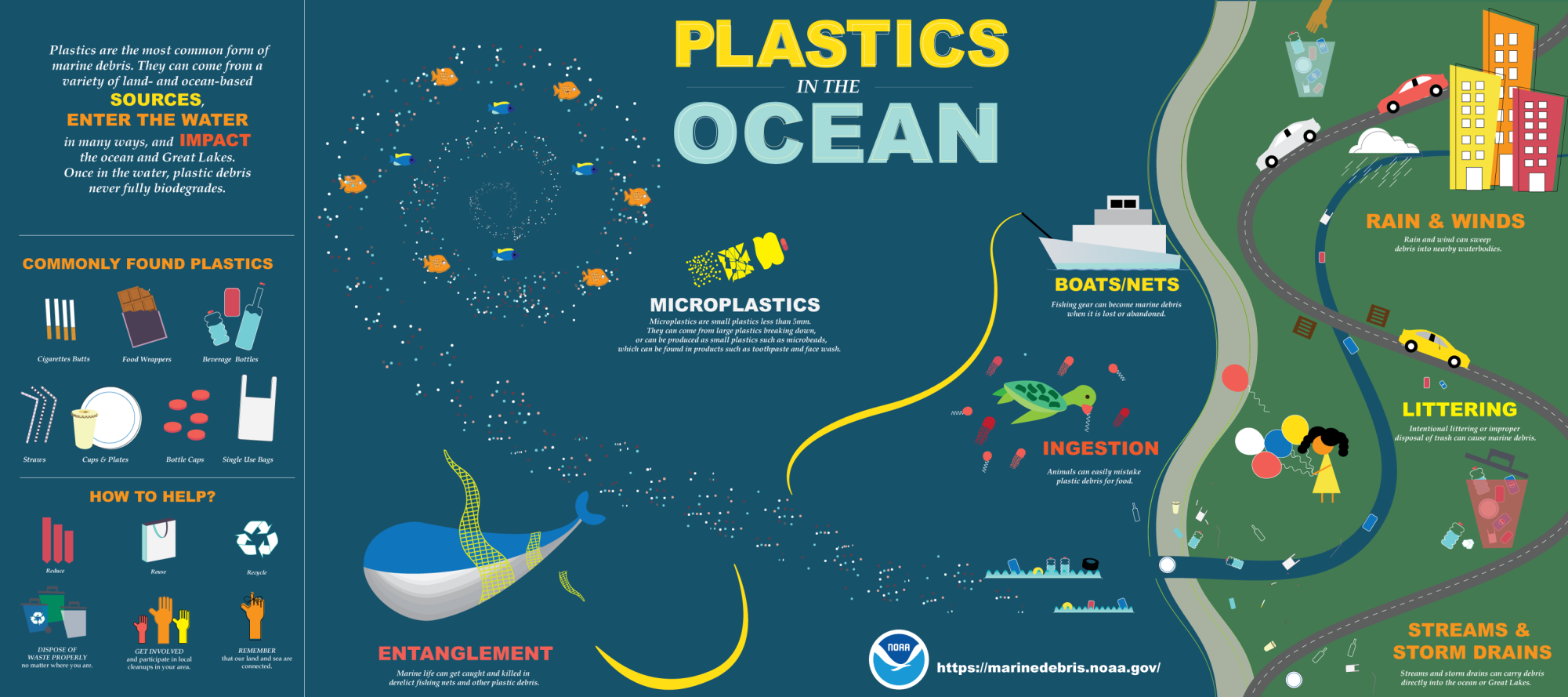Many lives of marine animals have been killed or injured due to the careless disposal of plastic, metal, and glass by people in the ocean. “Lots of people like to use the waterways for recreation but tend to only contribute to the problem by not picking up after themselves and caring for the areas,” says Samantha Mein, secretary for the principal and local fishing enthusiast.
Aquatic animals like turtles get caught in plastic bags and unable to free themselves, often getting hurt or suffocating to death. Aquatic life also thinks that plastic, metal, or glass is food. They consume the trash, which potentially poisons them, clogs their stomachs to cause starvation and death, or cuts their internal organs with sharp edges. “It’s very sad, you would be amazed at the things we find in fish bellies when cleaning them to consume. Lots of plastics…” Mein explained.

Balloons in the sky also pose a threat to ocean life. What goes up must come down, so once a balloon loses air and it’s hovering over the ocean, it’ll fall in, causing a creature to get stuck in it or eat it. Aquatic animals are incredible creatures, and while people claim to love them, many still drop things in the ocean that later take the life of wildlife in the water.
Another cause of endangered marine life is climate change and pollution. Due to water becoming too warm in the oceans, marine food chains like plankton die off, according to a US Environmental Protection Agency report. After those food chains die off, the animals that were consuming them suffer from starvation. Overall, it’s a struggle to adjust to new environments and climates. Aquatic animals and food chains will have a hard time adjusting and eventually may die because of it, and because of food shortages once food dies off. Like other causes, pollution also kills marine life. Once people dump toxic and polluting chemicals into the oceans, fish and other sea animals which depend on the ocean can get sick and die.
According to statistics from the Marine Conservation Institute, only about 3-8% of our world’s oceans are considered highly protected. This means that the other percentages of oceans are being destroyed along with the life that lives in them. It’s hard for a lot of people to walk on a beach beside an ocean and see millions of pieces of plastic, glass, metal, and other scraps in the sand or floating in the ocean, and sometimes baby turtles or washed-up stingrays stuck in those scraps. As an ocean lover and aquatic animal lover, it always hurts when I walk on the beach and walk along thousands of pieces scattered plastic, and then plastic cups or other dangerous things floating in the water waiting for a fish to get caught inside of it.
Overall, there is much work to be done to protecting our oceans and ocean animals. “I feel like there’s a lot of work needed to help protect our oceans and marine life,” shared Mein. She mentions that many organizations are busy trying to protect our oceans, but our earth is covered in 71% water, which makes it difficult and intimidating to try and protect. As people, some of whom may be guilty and responsible for leaving trash in the oceans, we need to take action. “Help do your part simply by picking up after yourself when visiting waterways and beaches,” Mein encourages. When going to the beach near an ocean or lake, we should feel obligated to pick trash up if trash is dropped. If we see any trash lying around we should also pick that up. Think of a pretty-looking sea creature finding that plastic that failed to be picked up and dying because it was suffocated. Feel motivated to protect our environment so it doesn’t slowly decay and lose its beauty. “On the water, we often scoop up trash and balloons with our net and properly dispose of it. Every little bit helps,” Mein said.
Since our earth is covered in 71% water, we can’t let pollution, trash or climate change ruin it and what lives in it.



